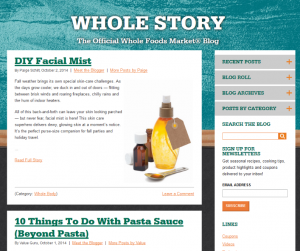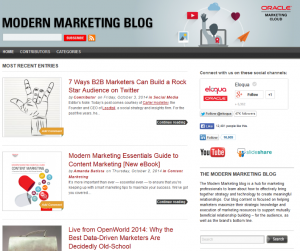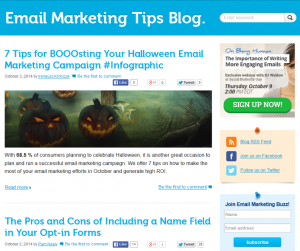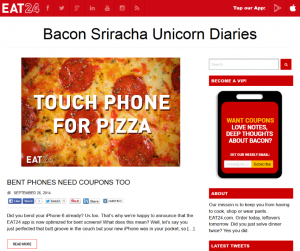 Social logins have become the norm and consumers not only look for a social login option on brand sites and mobile apps, they also expect a social login option.
Social logins have become the norm and consumers not only look for a social login option on brand sites and mobile apps, they also expect a social login option.
Gigya’s 2014 State of Consumer Privacy and Personalization study recently surveyed 2,000 people between the ages of 18 and 55 in the United States and the United Kingdom. The results showed that 77% of U.S. consumers and 60% of U.K. consumers have logged into a brand website or mobile account using a social network account.
This is a huge jump (45% increase) from 2012 when just 53% of U.S. consumers used social logins.
The rise of social logins is happening for three very specific reasons according to the Gigya report:
- Convenience: Fewer passwords to remember
- Ease: Particularly on mobile devices where filling out registration forms is difficult
- Relevance: By using a social login, consumers believe they get more personalized, relevant content and offers
In addition to convenience, ease, and relevance, consumers also believe that social logins offer greater transparency. The Gigya report explains:
Social login gives consumers the power to permit brands access to the data points housed within their social profiles needed to provide them with more relevant and timely user experiences, effectively striking a balance between two traditionally competing goals: privacy and personalization.
In other words, consumers feel like they have more control over their privacy and data sharing when they use a social login to access a brand site or application. With that said, it’s important to note that far more respondents to this survey used social logins because they’re convenient and easier than respondents who used social logins for greater transparency, relevance, and personalization.
Here’s the breakdown of why U.S. and U.K. consumers use social logins:
- I don’t want to spend time filling in registration forms = 53% U.S. and 60% U.K.
- I don’t want to create and remember another username and password = 47% U.S. and 46% U.K.
- I feel that my personal data is better protected when I use social login = 21% U.S. and 15% U.K.
- I want to share articles, products, or other content with my social network friends = 26% U.S. and 12% U.K.
- Other = 3% U.S. and 4% U.K.
What Should Brands Do?
First, it makes sense to provide an option for consumers to use social login on your website and in your mobile apps. Make sure that you clearly communicated how and why their information is used.
Furthermore, don’t ask for information beyond what you need to give the user what they’re looking for. The Gigya survey found that 84% of U.S. consumers and 81% of U.K. consumers have abandoned an online registration form because they weren’t happy with the amount or type of information that was requested. It’s nice to get extra information that you can use for targeting in the future, but you need to weigh the worth of that data with the possibility of not getting any data at all when users abandon your form. This is a time when split-testing will be extremely helpful in creating the highest performing forms possible.
Does your brand use social logins on its sites yet? Leave a comment and share your thoughts.
Image: Camilla Ahrensball
 What makes a company blog stand out from the crowd?
What makes a company blog stand out from the crowd? If the content of the company blog isn’t relevant to the target audience, that audience won’t visit and read it. Furthermore, if the content isn’t useful to them, they could click away with a negative perception of your brand in their minds. Bottom-line, irrelevant and useless blogs can actually damage your brand reputation, which can lead to negative word-of-mouth marketing and lost sales in the future. Instead, publish relevant and useful content that is highly shareable.
If the content of the company blog isn’t relevant to the target audience, that audience won’t visit and read it. Furthermore, if the content isn’t useful to them, they could click away with a negative perception of your brand in their minds. Bottom-line, irrelevant and useless blogs can actually damage your brand reputation, which can lead to negative word-of-mouth marketing and lost sales in the future. Instead, publish relevant and useful content that is highly shareable. As with all social media marketing and content marketing, your blog content cannot be overly self-promotional. That doesn’t mean you can’t publish the occasional self-promotional blog post, but 80% of that post should be useful and no more than 20% should be self-promotional. In fact, the 80-20 rule should apply to all of your blog posts. Make sure that at least 80% of the posts you publish on your company blog are not self-promotional. If your blog reads like a series of ads or press releases, no one will stick around or visit again.
As with all social media marketing and content marketing, your blog content cannot be overly self-promotional. That doesn’t mean you can’t publish the occasional self-promotional blog post, but 80% of that post should be useful and no more than 20% should be self-promotional. In fact, the 80-20 rule should apply to all of your blog posts. Make sure that at least 80% of the posts you publish on your company blog are not self-promotional. If your blog reads like a series of ads or press releases, no one will stick around or visit again. Avoid publishing the same type of blog post again and again. For example, if your brand is in the travel industry, avoid publishing post after post about the same travel destination. If your brand is in the email marketing industry, avoid publishing posts that are only about email marketing. Instead, go beyond the obvious content topics and look for indirectly related topics that can add variety and interest to your blog.
Avoid publishing the same type of blog post again and again. For example, if your brand is in the travel industry, avoid publishing post after post about the same travel destination. If your brand is in the email marketing industry, avoid publishing posts that are only about email marketing. Instead, go beyond the obvious content topics and look for indirectly related topics that can add variety and interest to your blog. What is your brand personality? It should be reflected in your blog content. Your company blog should not read like a corporate document or an advertisement. It should read in a voice that will resonate with the audience and accurately reflects your brand personality. Of course, keep it professional!
What is your brand personality? It should be reflected in your blog content. Your company blog should not read like a corporate document or an advertisement. It should read in a voice that will resonate with the audience and accurately reflects your brand personality. Of course, keep it professional! The user experience on your company blog must be reflective of your brand promise. For example, your company blog should be visually appealing and match your brand image. It should load quickly and be updated often to keep visitors coming back and to motivate them to tell their friends about it.
The user experience on your company blog must be reflective of your brand promise. For example, your company blog should be visually appealing and match your brand image. It should load quickly and be updated often to keep visitors coming back and to motivate them to tell their friends about it.